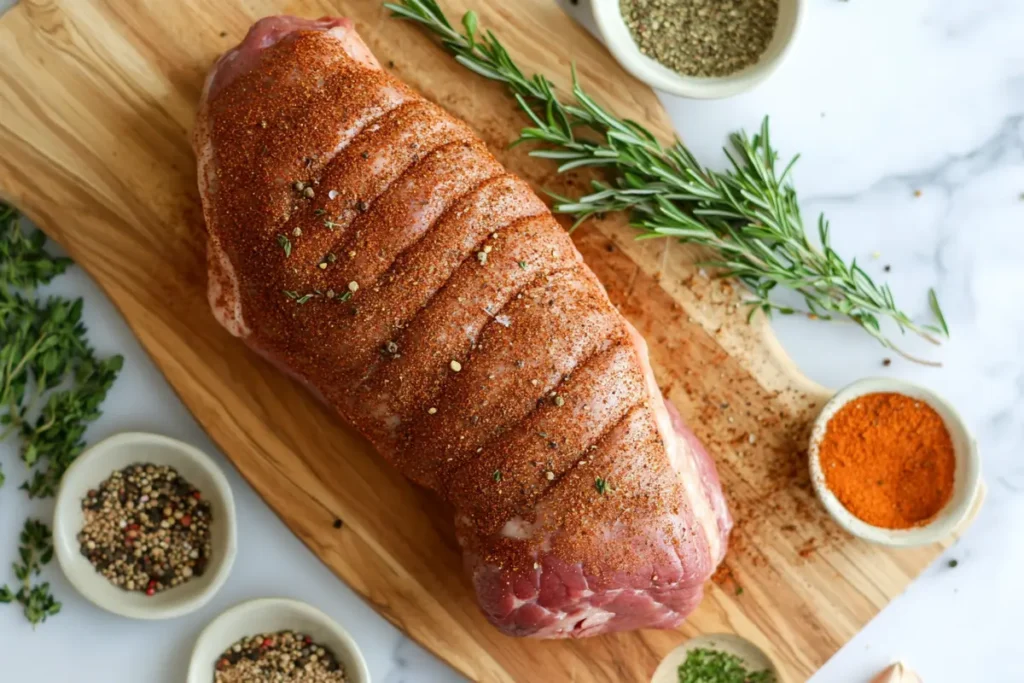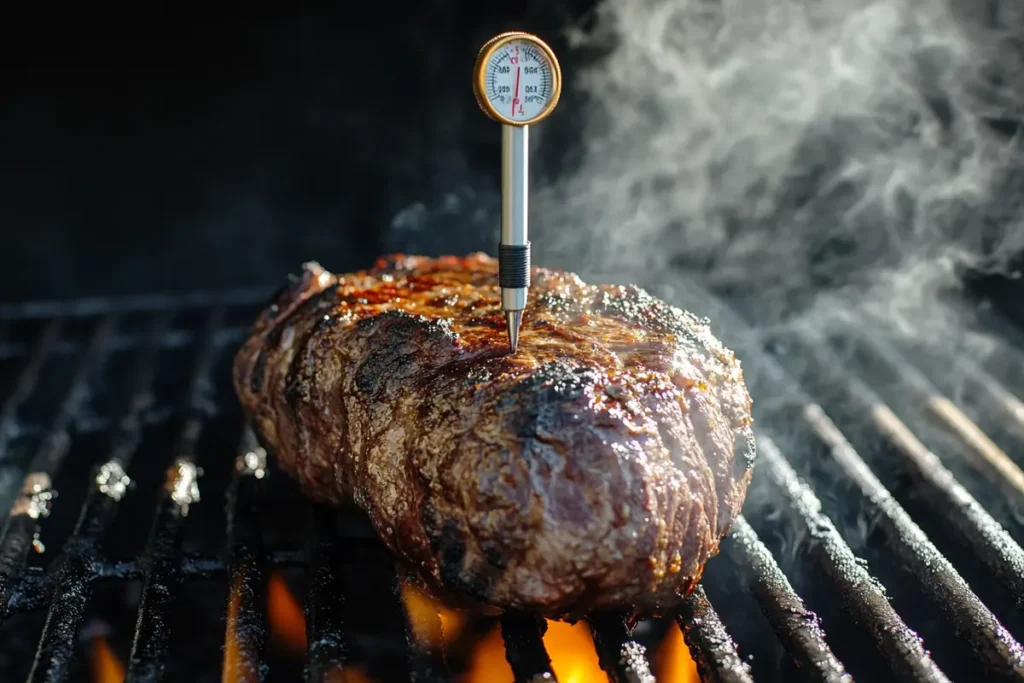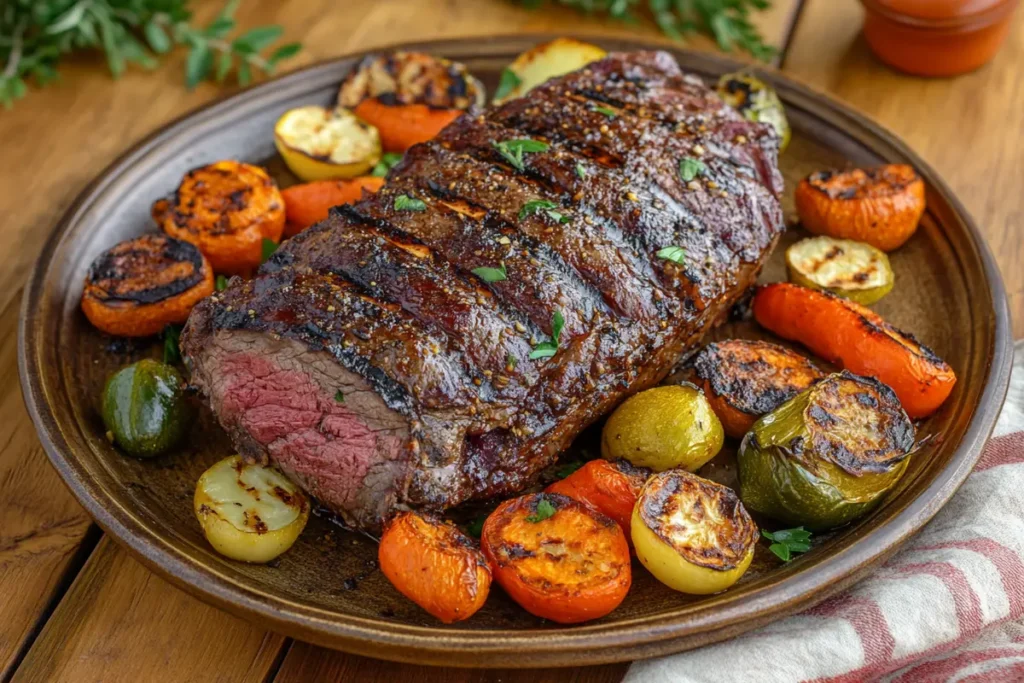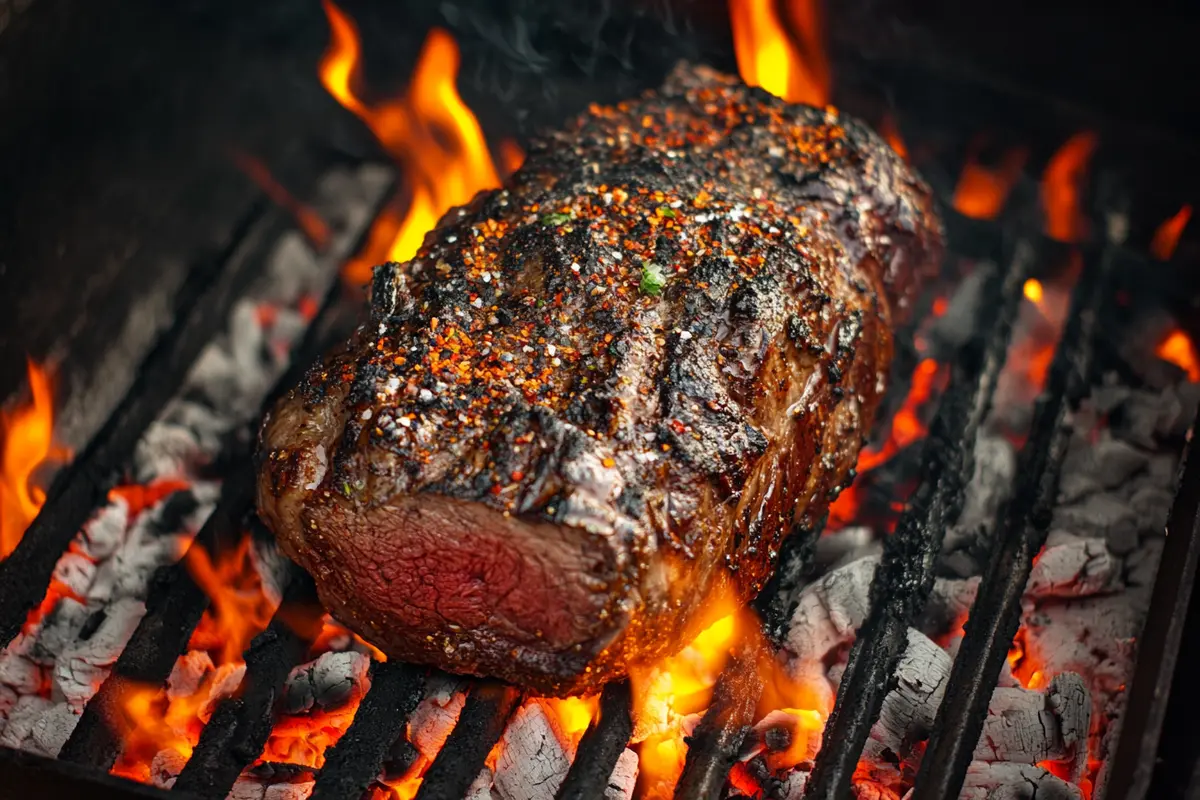Grilling beef arm roast may not be the first thing that comes to mind when you think of barbecue. Yet, with a little preparation, this flavorful and often overlooked cut of meat can be transformed into a mouthwatering masterpiece. Whether you’re aiming for smoky tenderness or a seared crust with juicy goodness, this guide will walk you through everything from preparation to serving. So, grab your apron, fire up the grill, and let’s get cooking!
Can You Grill Beef Arm Roast?
Understanding Beef Arm Roast
Grilling beef arm roast is entirely possible, though it requires a bit of finesse due to the nature of this cut. Taken from the shoulder section of the cow, it is known for its rich flavor but can be tough if not handled correctly. The key to success lies in the method—low and slow cooking or a combination of direct and indirect heat can turn this economical cut into a star.
Definition and Characteristics
Beef arm roast is a boneless, flavorful cut with a noticeable marbling of fat. It often includes connective tissue, which adds to its flavor when cooked slowly. While this cut is usually associated with braising or roasting, grilling offers a fantastic way to introduce smoky and charred flavors.
Common Culinary Uses
Traditionally, arm roast is used for pot roasts or slow-cooked stews. But grilling introduces a whole new dimension. When grilled, it achieves a crusty exterior while retaining a tender inside if prepared the right way. This versatility is one of the many reasons to try grilling this cut.
Preparing Beef Arm Roast for Grilling
Selecting the Right Cut
Before diving into the grilling process, selecting the perfect beef arm roast is paramount. The quality of your cut significantly affects the final flavor and texture, so don’t overlook this crucial step.
Freshness Indicators
Freshness is everything when it comes to meat. Look for a roast with a deep red color and a firm texture. Avoid any cut with a slimy surface or off-putting odor. The fat should be creamy white, not yellow, as this indicates freshness. Trust your butcher or a reliable grocery store for the best options.
Optimal Size and Thickness
Choose a cut that suits your grilling method. For grilling, a 2-3 inch-thick arm roast works best as it allows for proper cooking without drying out. Thinner cuts tend to cook too quickly, leaving little room to develop a rich, smoky flavor.
Tenderizing Techniques
The connective tissue in beef arm roast can make it tough, but don’t let that intimidate you. Tenderizing transforms this cut into something truly exceptional.
Mechanical Tenderization
Using a meat mallet or tenderizing tool, gently pound the roast to break down the tough fibers. This step ensures the meat cooks evenly and stays tender throughout the grilling process.
Marination Methods
Marinating your arm roast isn’t just about flavor—it’s about tenderness, too. Acidic ingredients like vinegar, lemon juice, or even yogurt can soften the meat, while spices add depth. For a balanced marinade, mix olive oil, garlic, paprika, black pepper, and a splash of citrus juice.

Marinating the Roast
Once you’ve chosen your marinade, let the meat absorb these flavors for several hours or even overnight.
Ideal Marinade Ingredients
Combine salt, garlic, pepper, onion powder, and a bit of honey for a marinade that enhances the natural taste of the beef. Feel free to customize with herbs like thyme or rosemary for an earthy note.
Recommended Marination Time
Allow the beef to marinate for at least 4-6 hours, but overnight is best. The longer it soaks, the more tender and flavorful it will become. Place it in a resealable bag or airtight container to lock in the flavors, then refrigerate until you’re ready to grill.
Grilling Techniques for Beef Arm Roast
Setting Up the Grill
Grilling beef arm roast requires careful preparation of your grill to ensure even cooking and robust flavor. Whether you’re using a charcoal or gas grill, proper setup is key.
Charcoal vs. Gas Grills
Both charcoal and gas grills can deliver excellent results, but each has its strengths. Charcoal grills impart a rich, smoky flavor that complements the robust taste of beef arm roast. On the other hand, gas grills offer better temperature control, which is ideal for longer cooking times.
Achieving Optimal Temperature
Preheat your grill to a medium-high temperature of around 350°F (175°C). For charcoal grills, arrange the coals on one side to create both direct and indirect heat zones. For gas grills, leave one burner off to achieve a similar effect. A consistent temperature ensures the meat cooks evenly without burning.
Direct vs. Indirect Grilling
The grilling method can make or break your beef arm roast. Combining direct and indirect grilling helps achieve the perfect balance of seared crust and tender interior.
Benefits of Indirect Heat for Arm Roast
Indirect heat is ideal for cooking the roast thoroughly without drying it out. It slowly breaks down connective tissue, allowing the meat to become tender while preserving its juices.
Managing Heat Zones
Set up two heat zones on your grill: a hot zone for searing and a cooler zone for slow cooking. Begin by searing the roast over direct heat for 3-4 minutes on each side to develop a flavorful crust. Then, move it to the cooler zone and cover the grill to allow the meat to cook evenly.
Cooking Time and Temperature
Grilling beef arm roast requires patience. Cooking it low and slow yields the most tender and flavorful results.
Recommended Internal Temperatures
For a perfectly grilled arm roast, aim for an internal temperature of 135°F (57°C) for medium-rare or 145°F (63°C) for medium. Use a meat thermometer to check the temperature at the thickest part of the roast without touching the bone.
Using a Meat Thermometer
A meat thermometer is an indispensable tool for grilling perfection. Insert the probe into the center of the roast to get an accurate reading. Remember, the temperature will rise slightly during resting, so remove the meat from the grill when it’s 5-10°F below your target doneness.

Enhancing Flavor
Grilling a beef arm roast isn’t just about cooking it through; it’s about elevating its natural flavors to create a truly memorable dish. By incorporating smoking techniques, basting, and glazing, you can add layers of complexity that make every bite irresistible.
Smoking Options
Adding a touch of smoke to your beef arm roast transforms its taste, giving it that distinct, smoky barbecue essence.
Selecting Wood Chips
The choice of wood chips plays a crucial role in the flavor profile. Hickory and mesquite provide bold, smoky flavors that pair beautifully with the rich taste of beef. For a milder touch, try fruitwood options like apple or cherry.
Incorporating Smoke into Grilling
To use wood chips, soak them in water for 30 minutes before grilling. Place them in a smoker box or wrap them in foil with holes poked in the top. Add the chips to your charcoal or place them directly on the burners of a gas grill. Close the lid to trap the smoke and infuse the meat with its aroma.
Basting and Glazing
Basting and glazing are excellent ways to lock in moisture while adding extra flavor to your roast.
Suitable Basting Sauces
Prepare a basting sauce with beef stock, melted butter, garlic, and your favorite herbs. A touch of honey or brown sugar can enhance the caramelization during grilling. Brush the sauce onto the roast every 15 minutes as it cooks.
Timing for Basting
Timing is everything when basting. Start basting after the initial searing phase, ensuring the sauce doesn’t burn on the high heat. Continue basting as the roast cooks over indirect heat to keep it moist and flavorful.
Serving Suggestions
The final step in grilling your beef arm roast is presenting it in a way that highlights its rich, smoky flavors and tender texture. From letting the roast rest to carving it properly, every detail counts in creating an unforgettable dining experience.

Resting the Meat
Before slicing into your perfectly grilled roast, give it time to rest. Resting ensures the juices redistribute evenly, resulting in a moist and flavorful bite.
Importance of Resting
Resting is a critical but often overlooked step. Cutting into the roast too soon causes the flavorful juices to escape, leaving the meat dry. By letting it rest, the meat retains its succulence.
Recommended Resting Duration
Tent the roast loosely with aluminum foil and let it rest for 10-15 minutes. This brief pause allows the internal temperature to stabilize and makes carving easier.
Carving Techniques
How you slice the beef arm roast can impact its tenderness and flavor perception. Proper carving ensures every piece is as enjoyable as the next.
Slicing Against the Grain
Always slice the meat against the grain. This technique shortens the muscle fibers, resulting in tender bites that are easier to chew.
Achieving Optimal Slice Thickness
For beef arm roast, thinner slices work best. Aim for slices about 1/4 inch thick to maintain the perfect balance between texture and flavor.
Accompaniments and Side Dishes
Pairing your roast with the right sides can elevate your meal. Consider options that complement the bold, beefy flavors.
Traditional Sides
Classic sides like roasted potatoes, grilled corn, or a fresh green salad work wonderfully with beef arm roast. These simple dishes let the roast remain the star of the meal.
Beverage Pairings
Although beverages are optional, offering guests refreshing non-alcoholic options like iced tea, sparkling water, or a citrus-infused cooler adds a thoughtful touch.
Frequently Asked Questions (FAQs)
Is beef arm roast suitable for grilling?
Yes, absolutely! While beef arm roast is often associated with slow cooking methods like braising, it’s equally suited for grilling. With the right preparation, such as tenderizing and marinating, this cut can yield a smoky, tender, and flavorful result on the grill.
How can I ensure my beef arm roast is tender?
Tenderness comes down to preparation and technique. Start by tenderizing the meat mechanically or with a marinade that includes acidic ingredients. Cook the roast low and slow using indirect heat to break down the connective tissues, and don’t skip the resting phase after grilling.
What marinades work best for beef arm roast?
Marinades that balance acidity, fat, and seasoning are ideal. Ingredients like olive oil, lemon juice, garlic, and soy sauce work beautifully. Adding herbs such as rosemary or thyme can enhance the beef’s natural flavor, while honey or brown sugar provides a hint of caramelization.
How long should I grill a beef arm roast?
The grilling time varies based on the roast’s size and thickness, but a 2-3 inch-thick cut typically requires 1.5 to 2 hours on indirect heat. Use a meat thermometer to monitor the internal temperature for precision.
What internal temperature should beef arm roast reach when grilled?
For medium-rare, aim for an internal temperature of 135°F (57°C). For medium, target 145°F (63°C). Always use a meat thermometer to ensure accuracy, and remember that the temperature will rise slightly while resting.
Can I use a gas grill to cook beef arm roast?
Yes, a gas grill works perfectly fine for grilling beef arm roast. Its precise temperature controls make it easier to maintain steady heat, which is essential for this cut. Just make sure to create indirect heat zones for optimal cooking.
Summarizing the Grilling Process for Beef Arm Roast
Grilling beef arm roast might seem like a challenge at first glance, but with the right approach, it’s an enjoyable and rewarding endeavor. From preparation to serving, each step plays a vital role in transforming this budget-friendly cut into a show-stopping centerpiece for your meal.
The Journey to Perfection
It all starts with selecting the freshest, most suitable cut for grill beef arm roast and preparing it with care. Tenderizing methods and flavorful marinades not only soften the meat but also infuse it with vibrant tastes that shine on the grill. Once the roast is ready, the proper grilling technique combining direct and indirect heat ensures even cooking and a deliciously seared crust.
Key Takeaways
- The magic lies in the low-and-slow cooking process, which allows the connective tissues to break down, yielding a tender and flavorful roast.
- Enhancements like smoking with wood chips and basting with a rich sauce elevate the flavor to new heights.
- Resting the meat before carving ensures it retains all those savory juices, while carving against the grain guarantees a perfect texture in every slice.
- Pairing your roast with complementary sides and presenting it thoughtfully adds the finishing touches to your masterpiece.
Your Next Steps
With this guide, you’re ready to take on the challenge of grilling beef arm roast. Whether it’s for a weekend family dinner or a backyard barbecue, this underrated cut is sure to impress when cooked to perfection. So, grab your grilling tools, experiment with flavors, and let your creativity shine.

